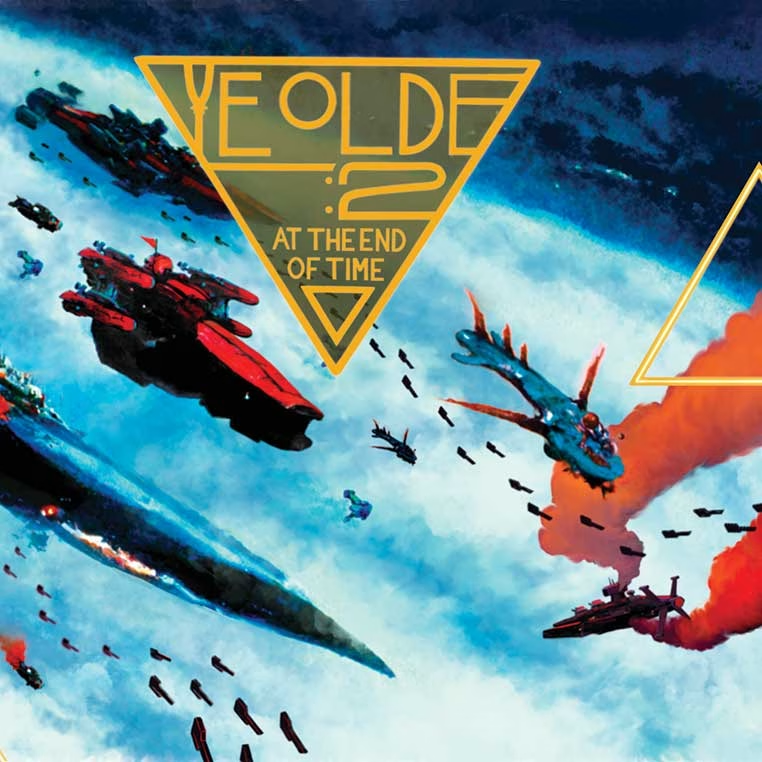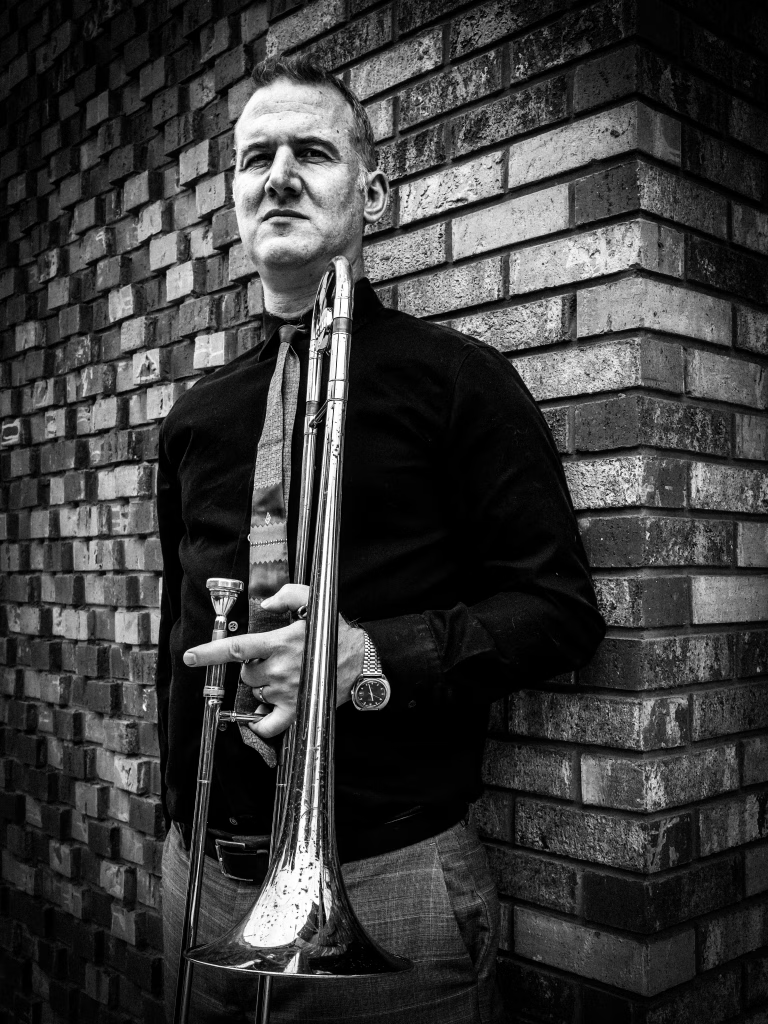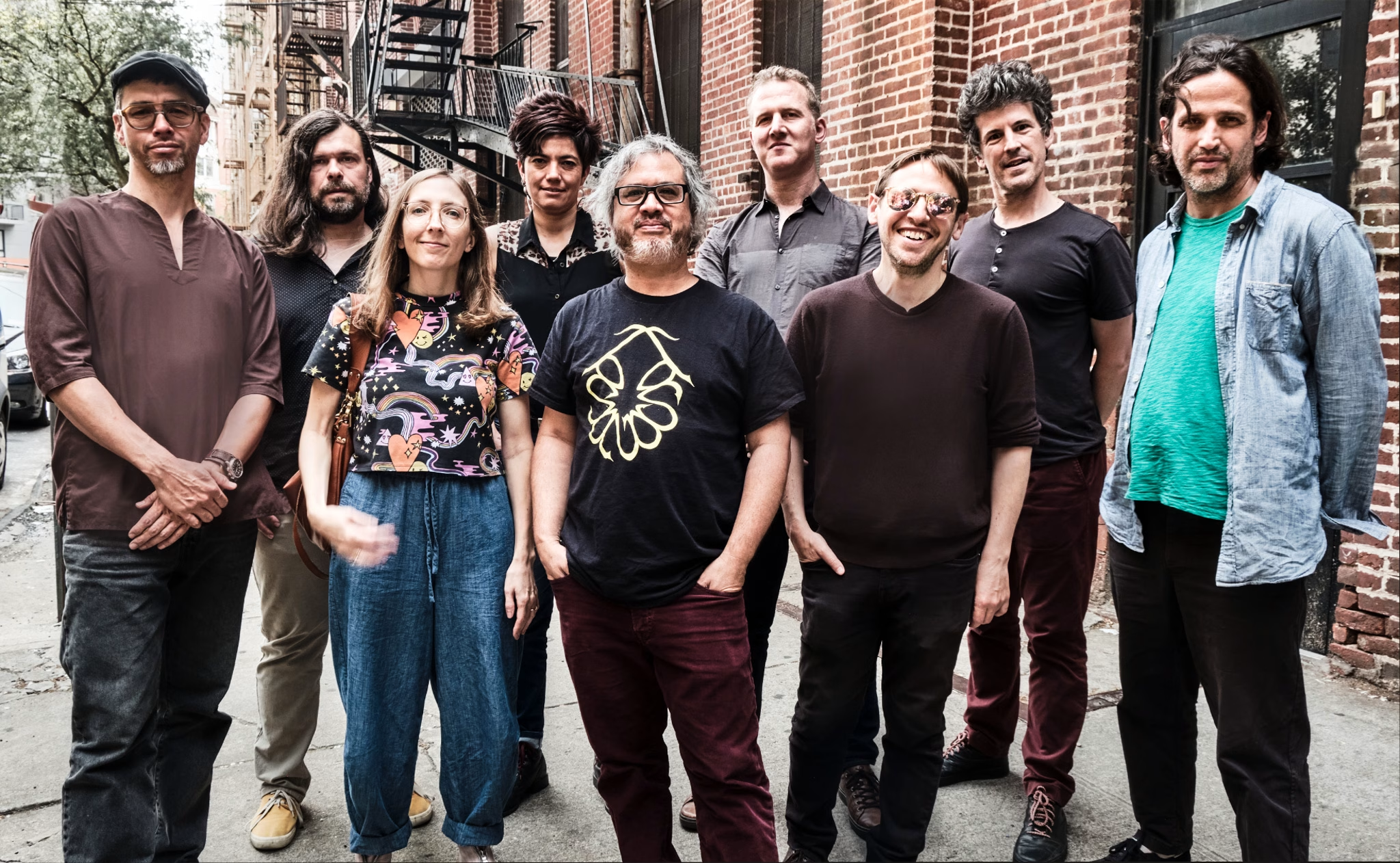Jacob Garchik – Ye Olde 2: At the End of Time

A cosmic sequel that blends humor, science fiction, and guitar-driven improvisation
Trombonist and composer Jacob Garchik has long gravitated toward ambitious projects that expand the vocabulary of jazz: from gospel reframed in The Heavens (2012), to a rhythm-sectionless big band on Clear Line (2020), to the layered studio collages of Assembly (2022). With Ye Olde 2: At the End of Time (Yestereve Records, August 29, 2025), he resurrects the band of misfit heroes from 2015’s Ye Olde, propelling them from a medieval-fantasy parody into a science-fiction saga.
The core lineup features Garchik with three of New York’s most distinctive guitarists—Mary Halvorson, Jonathan Goldberger, and Brandon Seabrook—anchored by Vinnie Sperrazza on drums. Halfway through the journey, they encounter their resurrected mirror selves, Simulacrus, a rival band featuring Miles Okazaki, Sean Moran, Ava Mendoza, and drummer Josh Dion. The stage is set for a cosmic “battle of the bands” at the edge of the universe.
From Medieval Brooklyn to the Omega Point
Where the first Ye Olde indulged in tongue-in-cheek medievalism, its sequel reaches for the Omega Point—a speculative moment when the universe collapses into singularity and superintelligence rewrites history. Garchik cites influences from Chick Corea and Lenny White’s sci-fi albums to Spinal Tap’s parody, with a touch of Ligeti’s spiraling etudes.
The music reflects these inspirations with humor and precision. The opener, “One Can Only Go Up,” begins with a rising two-octave motif that introduces the guitarists in turn: Seabrook on 12-string, Halvorson in her signature skewed phrasing, Goldberger with grit, before Halvorson expands into the first extended solo. That sense of playful progression continues in “Transcending Time,” a mash-up of medieval motifs and doom metal, where Seabrook manipulates volume swells against Garchik’s plungered trombone, before Goldberger’s baritone guitar drives the melodramatic finale.


Improvisation as Narrative
The arc of the album is built through improvisational encounters. “Caro Ortolano,” a 1578 Renaissance dance, provides historical dislocation before bursting into the punk-jazz urgency of “Exo Microbiology,” where Seabrook and Goldberger trade solos over writing that grows from unison to intricate three-part counterpoint. Halvorson finds a more reflective voice on “Dyson Spheres,” her solo emerging from fractured melodic cells shared between the guitarists.
The transition “Von Neumann Probes” prepares the shift into Simulacrus, and with “Omega Point” the mirror band takes over: Okazaki’s taut lines and Mendoza’s raw phrasing shape a descent that directly reverses the ascent of the opener. The climactic “Ye Olde vs Simulacrus” layers six guitars and two drummers into a surprisingly lucid confrontation, Moran answering for Simulacrus before Goldberger counters for Ye Olde, the guitars crisscrossing like dueling timelines while Garchik holds the center.
Resolution and Reflection
The finale, “Floating Brain,” brings resolution not through triumphalism but through atmosphere: each guitarist overdubbed into a 19-chord cycle, Sperrazza spinning a freewheeling solo before joining Garchik in a closing exchange that hovers between fragility and persistence. It’s a fitting conclusion for an album that manages to be both wildly imaginative and musically rigorous.
Ye Olde 2: At the End of Time is as much about storytelling as it is about improvisation. Garchik balances absurdist science-fiction scenarios with serious musicianship, offering a record that will resonate with listeners drawn to avant-garde guitar interplay, compositional wit, and the joy of turning speculative fiction into sound.


